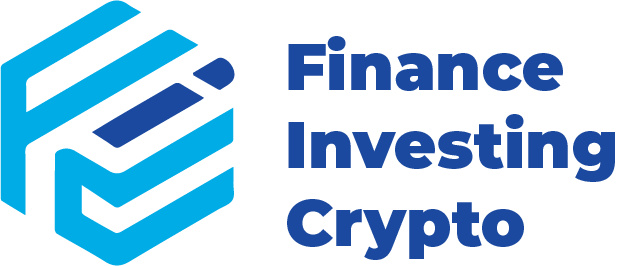Disclosure: The views and opinions expressed here belong solely to the author and do not represent the views and opinions of crypto.news’ editorial.
The world of finance is no longer bound by borders, nor by a single chain. As blockchain technologies mature and financial institutions navigate this new digital era, a multichain future is becoming not just probable, but inevitable. From asset tokenization to cross-border payments and programmable compliance, the contours of global finance are being redrawn—not on one blockchain, but on many.
Why a multichain future is inevitable
The dream of a single, dominant blockchain serving as the global settlement layer is fading. Instead, we’re witnessing the rise of application-specific blockchains, modular frameworks, and interoperability layers. Financial institutions are opting for chains based on regulatory compatibility, throughput, developer tooling, and cost-efficiency.
Ethereum (ETH) remains dominant in terms of developer activity and DeFi liquidity, but it’s no longer alone. Solana’s (SOL) speed has attracted fintech experiments. Polygon has emerged as a key player due to its low fees, modular architecture, and institutional-grade infrastructure, attracting major players like Mastercard, Nubank, and Franklin Templeton. Public-permissioned chains like JPMorgan’s Onyx or Fnality’s Payment System are emerging alongside L2s and appchains.
In this landscape, the future of finance will be multichain by design, not by accident.
Real-world finance is already multichain
Let’s move beyond theory—real-world assets and real-world problems are already embracing a multichain world:
● Cross-border settlements: Singapore’s Project Guardian and Hong Kong’s Project mBridge are experimenting with multiple chains (including Ethereum, Polygon, Quorum, and bespoke solutions) for CBDC and FX tokenized settlements.
● Tokenization of assets: Franklin Templeton tokenized U.S. Treasuries, BlackRock’s Money Market Fund, Apollo’s Credit Fund, etc. Societe Generale issued a digital bond on Ethereum. Swiss bank UBS created a tokenized money market fund on Ethereum.
● Corporate adoption: Polygon has been the network of choice for companies like Flipkart (India’s Walmart-backed e-commerce giant) and Reliance Jio for loyalty tokens.
● Trade finance & supply chains: The ICC’s digital trade corridor between Singapore and China integrates multiple distributed ledgers through interoperability standards, not a common base layer.
In each case, the solution is dictated by context: jurisdiction, asset class, liquidity needs, compliance frameworks, and institutional comfort.
Interoperability is the new infrastructure
What TCP/IP did for the internet, interoperability protocols are doing for blockchains. Solutions like Polygon’s AggLayer, LayerZero, Axelar, Hyperlane, and Chainlink’s CCIP are laying the groundwork for seamless cross-chain communication. Cosmos’ IBC and Polkadot’s parachains take another approach—shared security and message-passing—but the outcome is the same: abstracting the complexity of multichain interactions.
Polygon is particularly noteworthy for its AggLayer—a unifying interoperability layer that aggregates chains into a single liquidity layer while preserving their individual sovereignty. Developers can use Polygon CDK to build custom appchains that are interoperable by default. A prominent example is Katana, a rollup built using both the OP Stack and Polygon CDK, showing that composable infrastructure can thrive across ecosystems, not just within them.
This matters because financial markets demand composability—not just within one chain, but across many. A hedge fund managing collateralized loans on Ethereum should be able to rebalance positions on Solana, execute trades on Katana, and settle stablecoin redemptions on a permissioned chain—all through abstracted routing and secure messaging.
Multichain finance does not mean siloed liquidity. It means modular liquidity, composable logic, and user choice.
Regulatory fragmentation will drive chain fragmentation
We cannot discuss global finance without addressing the elephant in the room: regulation. Each jurisdiction is approaching digital assets and tokenized finance with distinct philosophies. The EU’s MiCA treats stablecoins and crypto-assets as regulated financial instruments. In the U.S., we have fragmented regulation between the SEC, CFTC, and state regimes. Meanwhile, Asia is piloting CBDCs and sandboxed DeFi.
This fragmentation will lead to regulatory-based chain preferences. For example:
● An EU-regulated tokenized bond might settle on a chain with MiCA-aligned compliance modules.
● An Asian CBDC pilot may run on a sovereign-backed or hybrid chain that meets domestic data residency laws.
Polygon’s modularity positions it well in this fragmented environment, offering options for public, private, and hybrid chains that can adapt to local regulatory needs. Its CDK is already being explored for regulated DeFi and tokenized asset pilots in multiple jurisdictions.
One size does not fit all. And that’s okay—as long as the layers underneath connect.
What needs to happen next
For the multichain future of finance to thrive, we need three things:
- Standardized token frameworks: ERC-20 and ERC-4626 got us this far. But finance needs more robust standards for tokenized equity, debt, real estate, and yield-bearing assets — ideally with cross-chain mint/burn logic.
- Cross-chain compliance layers: Projects like zkVerify and modular KYC layers must allow credentials and compliance to flow across chains without duplicating user friction.
- Institutional-grade interoperability: We must move past retail bridges and into regulated interop stacks that support financial primitives (like atomic swaps, intent-based routing, and privacy-preserving messaging). Polygon’s AggLayer, in this context, could emerge as a foundational piece of infrastructure for regulated institutions.
The endgame: Finance without borders
Multichain does not mean chaos. It means freedom. Freedom for developers to choose the stack that fits. Freedom for institutions to comply without compromise. Freedom for users to access services without knowing what chain they’re on.
The multichain future of global finance is not a technical inevitability—it’s a design choice rooted in economic realism, geopolitical diversity, and technological modularity.
The chains may multiply. But the experience must unify.










